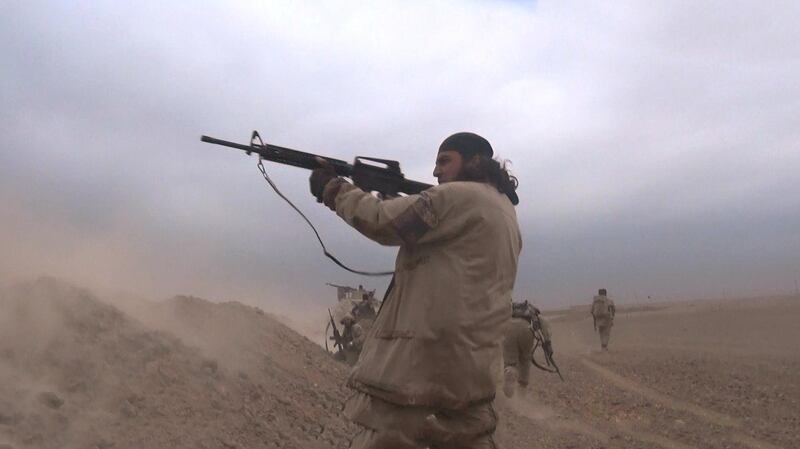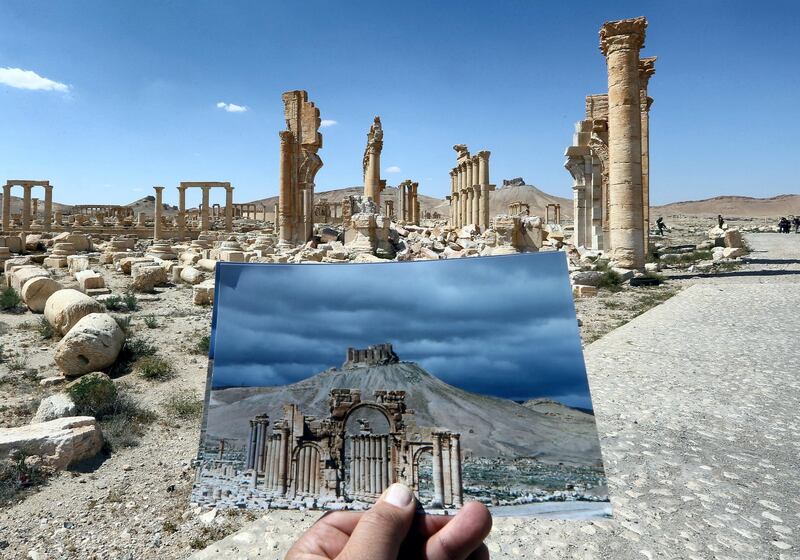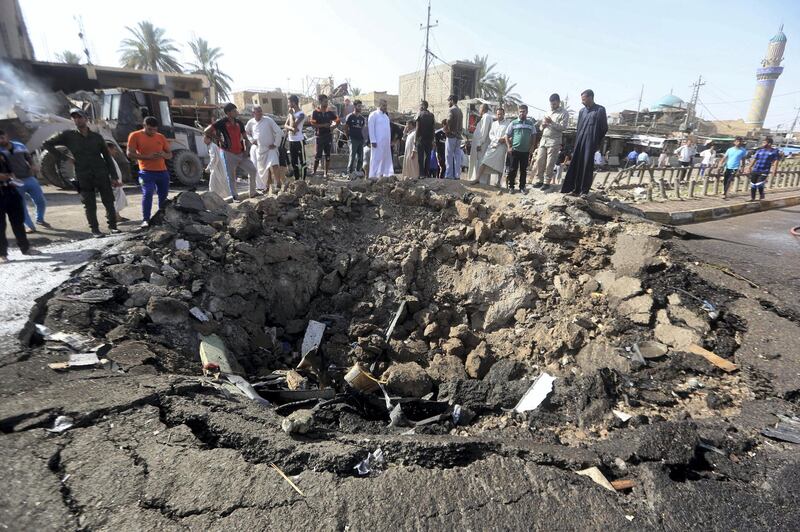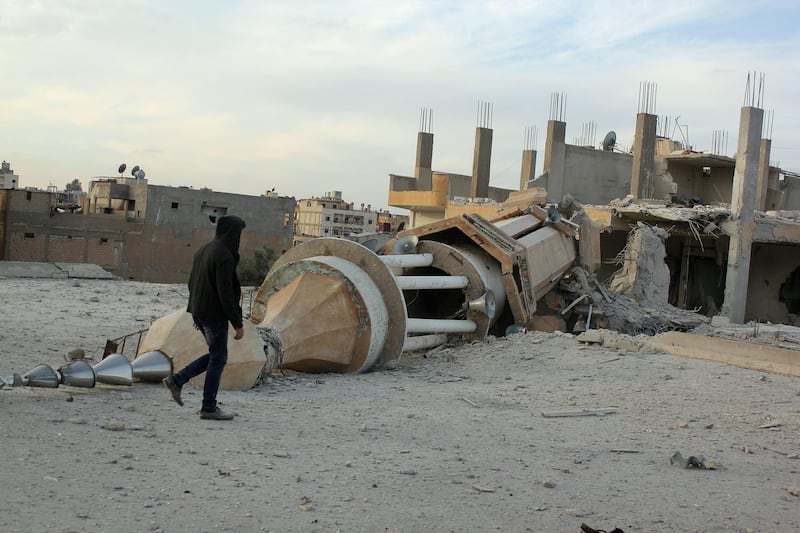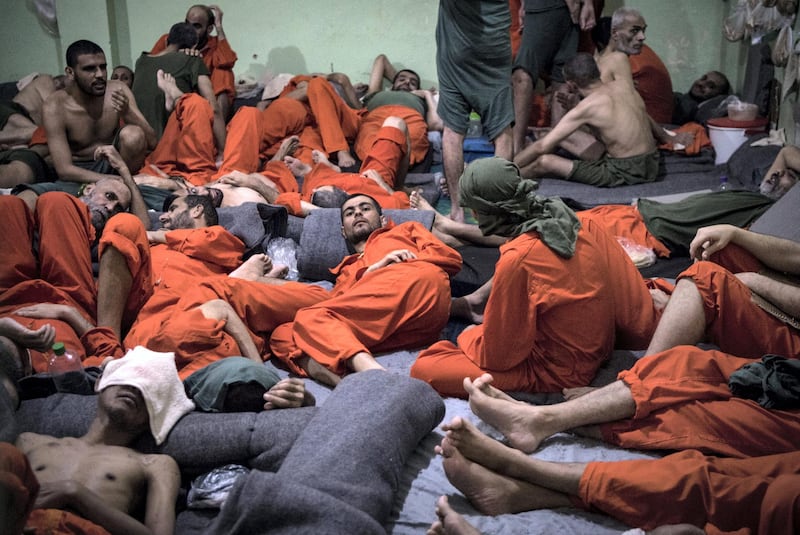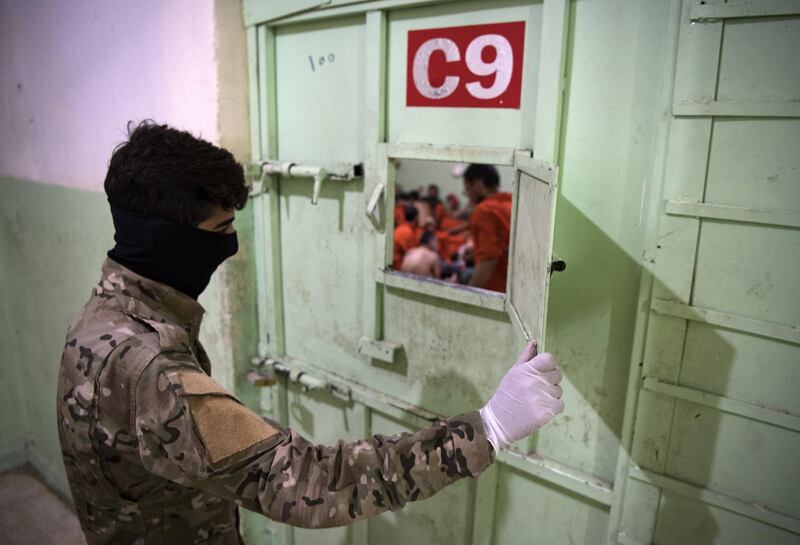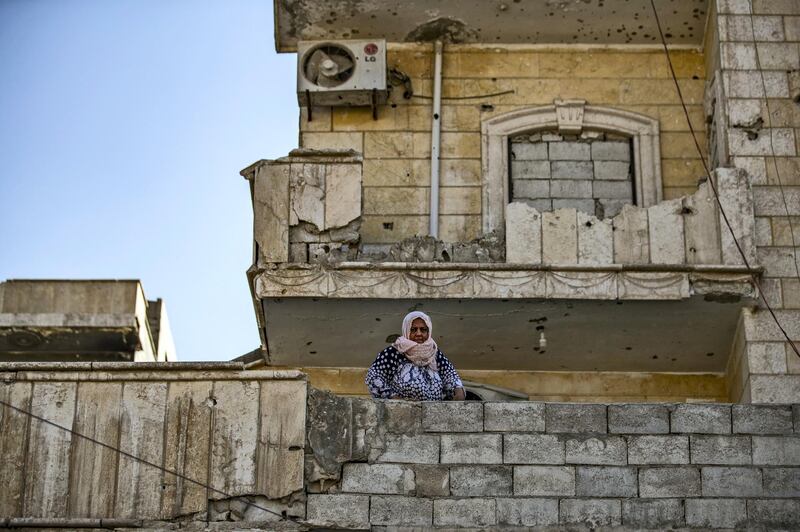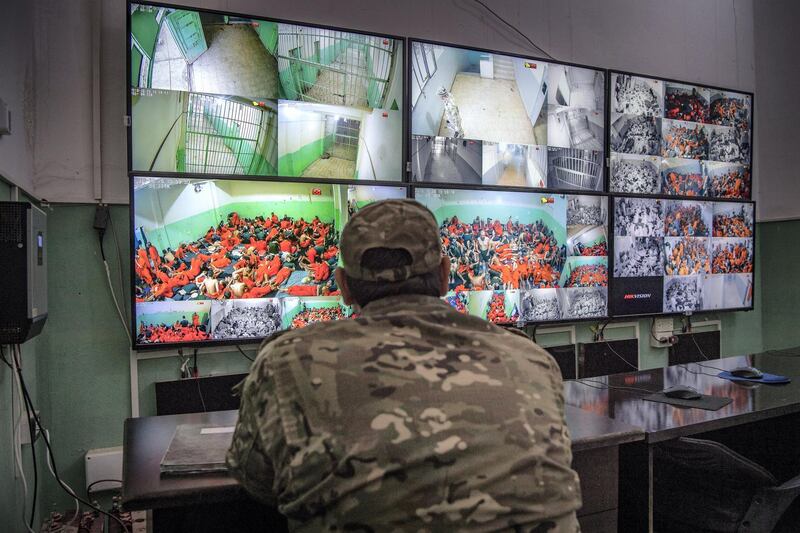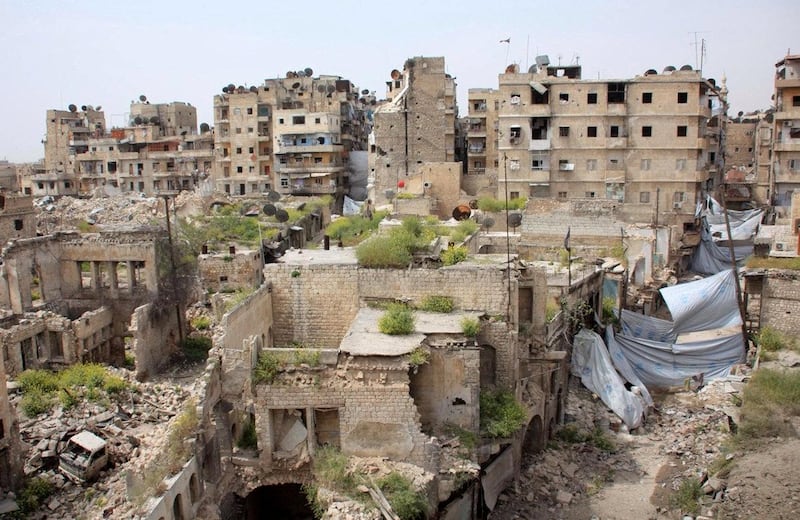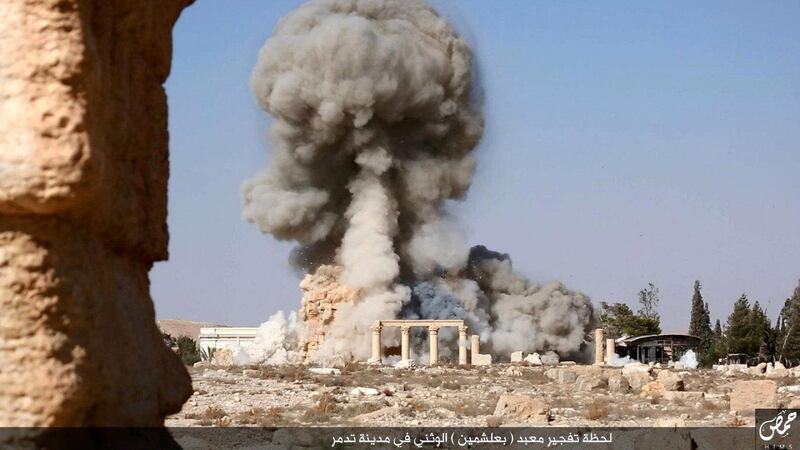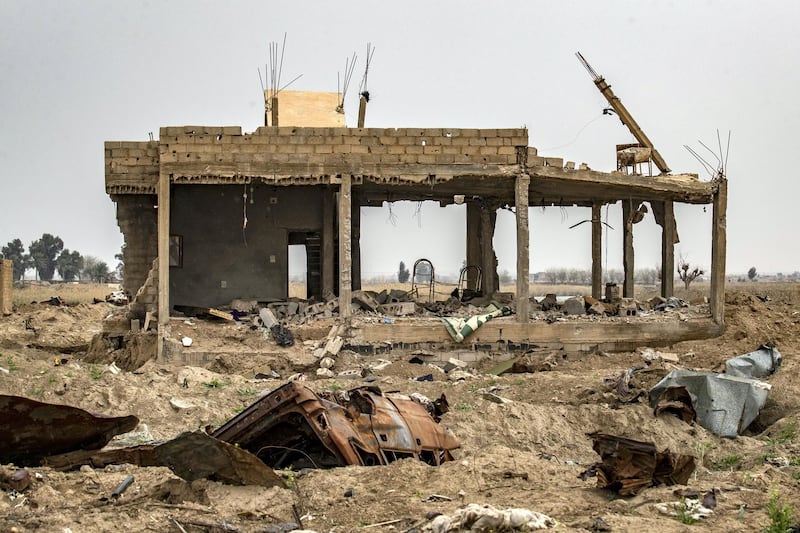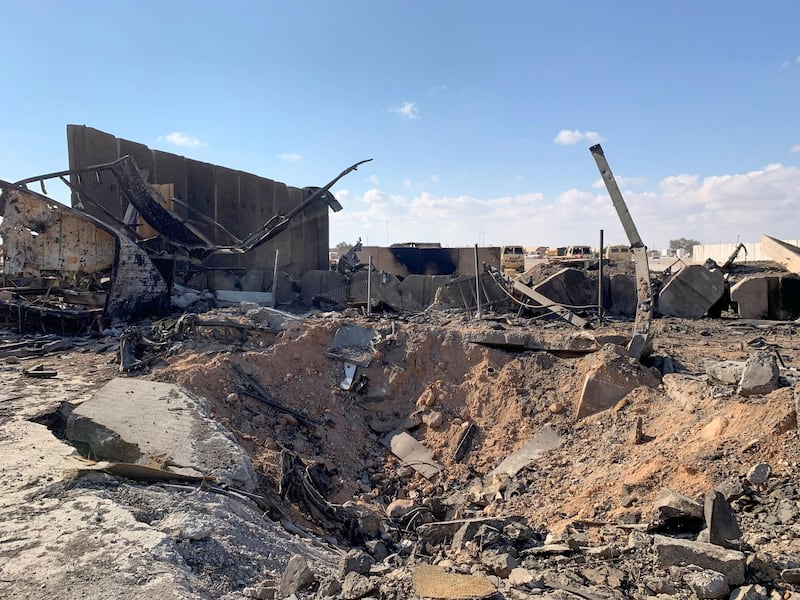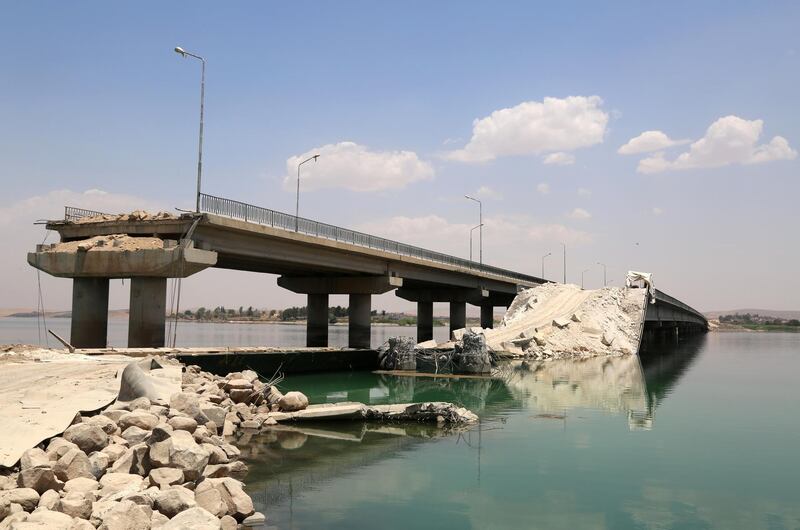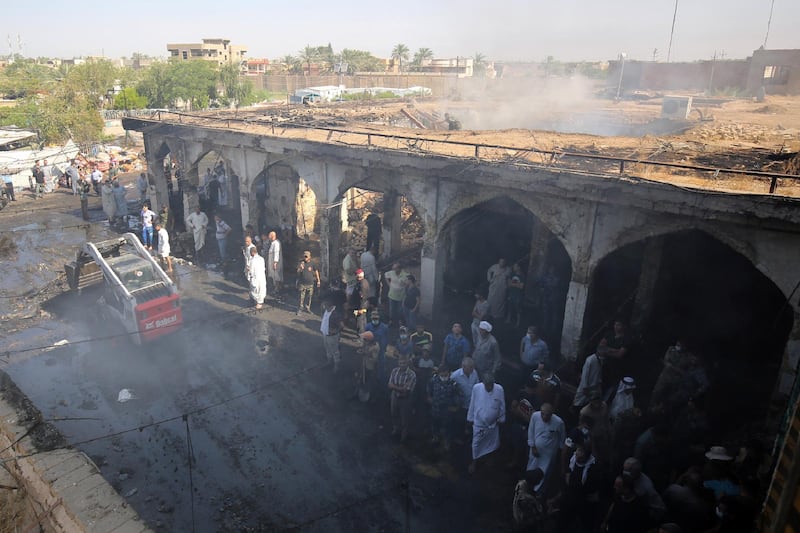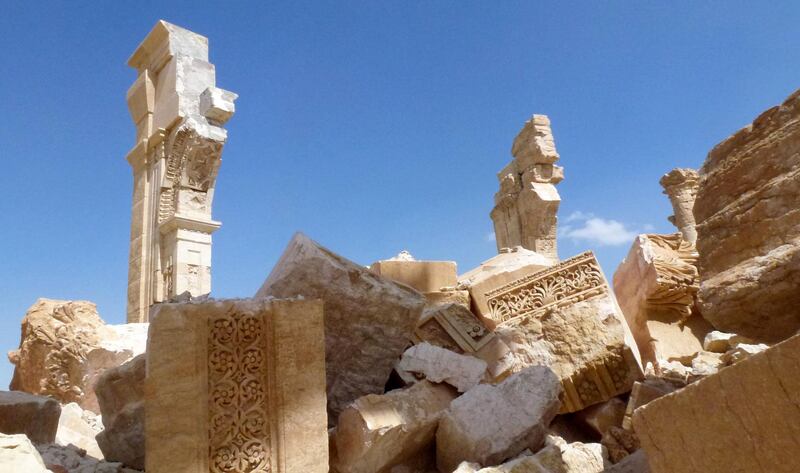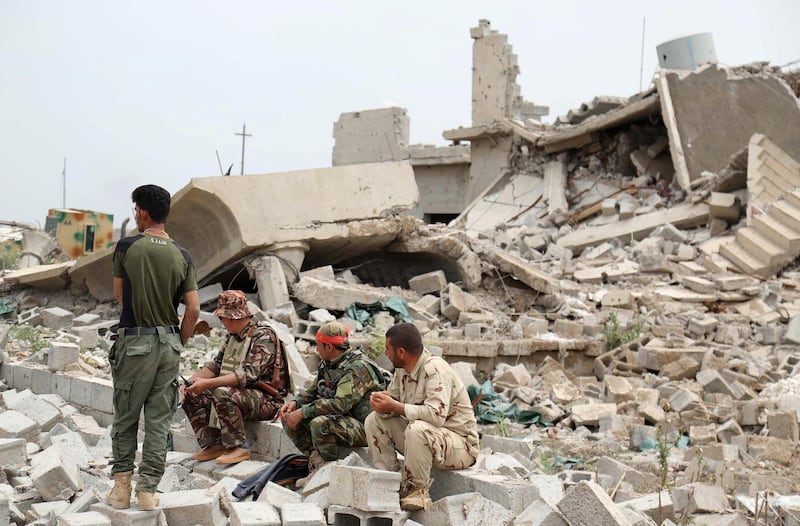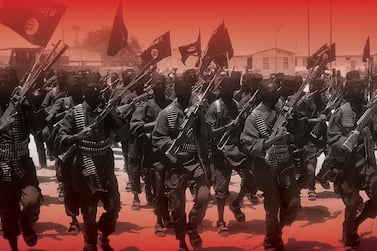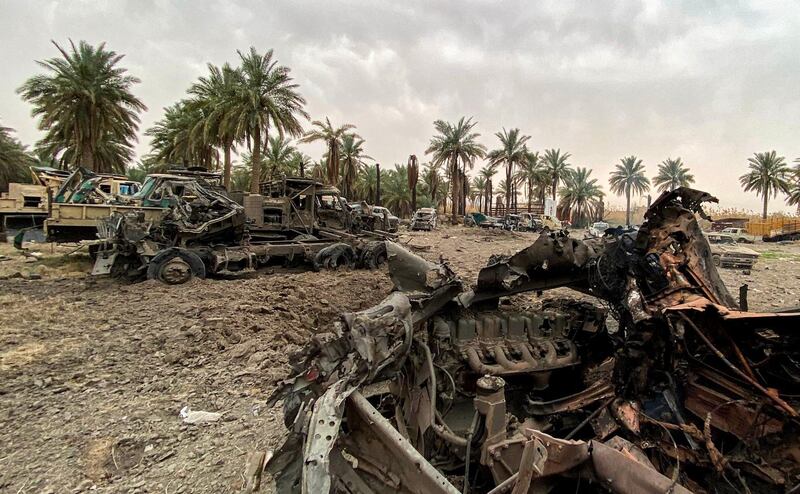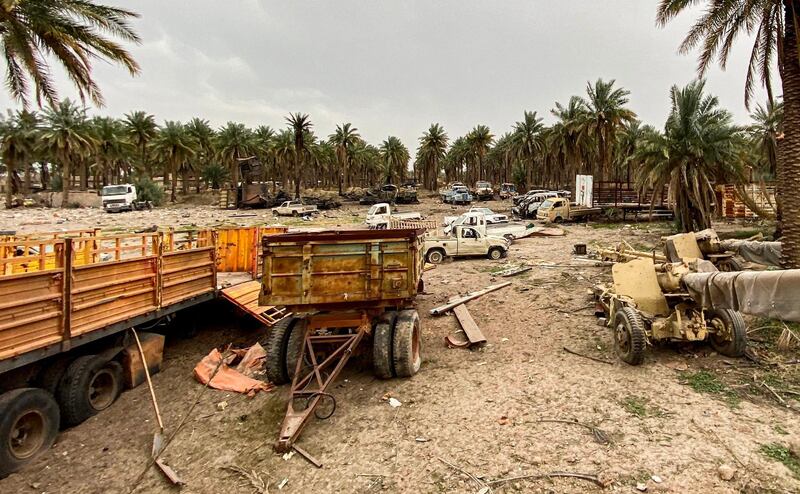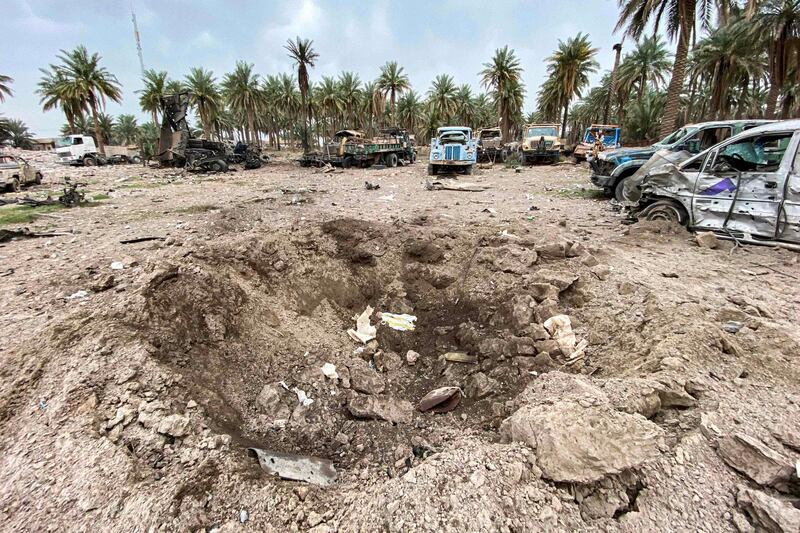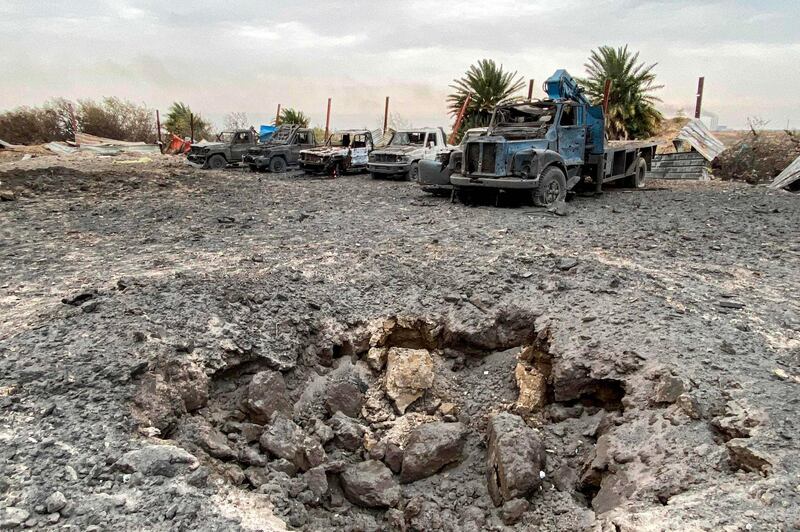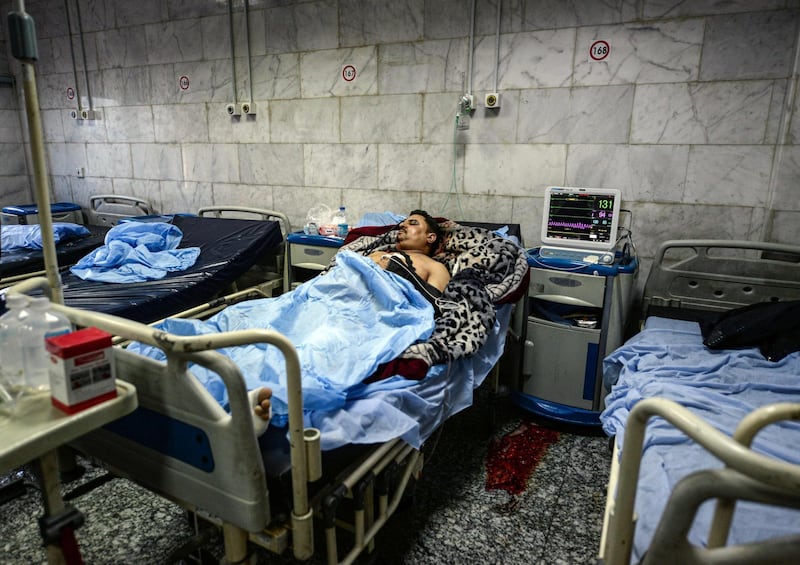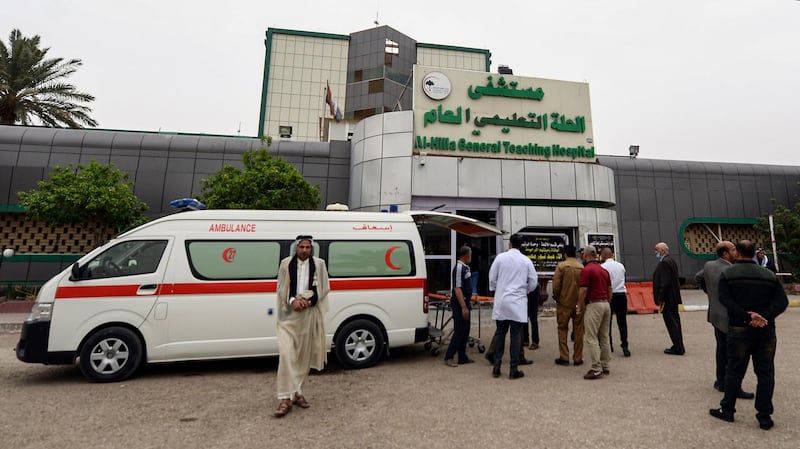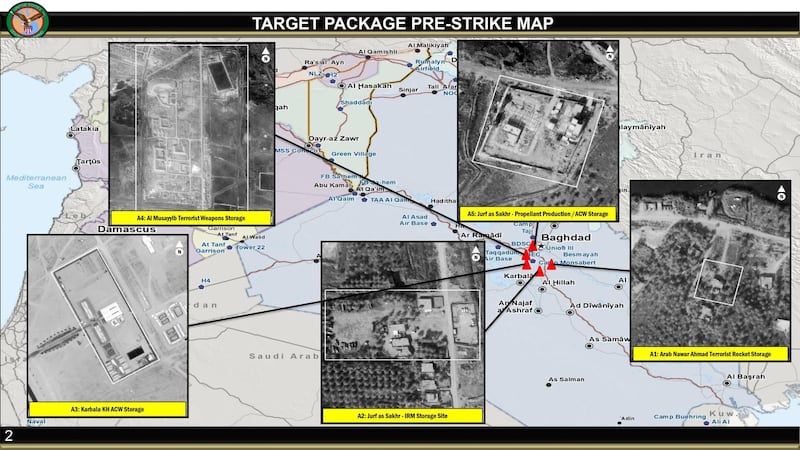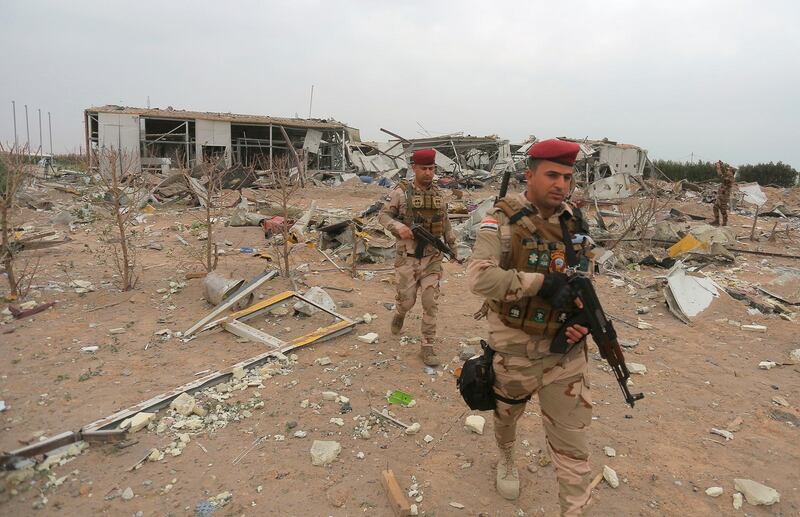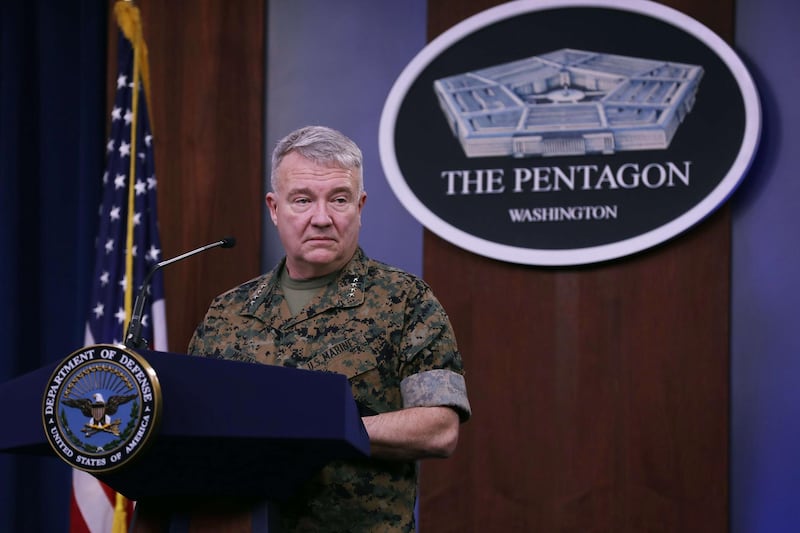ISIS has spent the last year seeking to regenerate. In this five-part special, The National investigates how the extremist group has gained a foothold in Africa, analyses its strategy for global growth, and explores its use of obscure social media platforms. Now, Sinan Mahmoud explores how ISIS is on the march in Iraq
Hours after it had kidnapped a prominent Shia tribal leader from Al Muqdadiya district in Iraq's Diyala province, ISIS rang his son to deliver the message they collect the dead man.
That was not to be the end of the family's ordeal. As the son and his friends approached the body, which was lying on its back with his arms bound, they walked into a booby trap. The explosion killed the son, two grandsons and a nephew.
The target of the killing was Ali Fdhala Al Kaabi, a leader among the Shia-led paramilitary troops who joined in the fight against ISIS. The man who called had introducing himself as an ISIS member. "Come and get your [Shia]", the dead man's cousin Ali Al Kaabi told The National.
ISIS is still alive and kicking in Iraq and posing a challenge to security forces. Its fighters are regrouping in small numbers in rural areas of the centre and the north, carrying out hit-and-run attacks.
These attacks range from assassinations of civilians and local officials and small bombings of security checkpoints, to kidnappings, extortion and burning crops.
News of ISIS attacks, arrests of its operatives and military operations against its hideouts is being reported daily. And Iraqi and foreign officials are warning that the fight is still far from over.
Lieutenant General Abdul-Wahab Al Saedi, the Head of the Counter Terrorism Service (CTS), estimates ISIS numbers in Iraq at 2500-3,000 fighters.
"They are not holding lands now and don't have the capability to do so, but what they do is quick attacks on selected targets," Mr Al Saedi told The National.
“Our operations to chase them are ongoing and they are taking place almost on a daily basis.”
Since May, CTS forces have conducted 140 operations mainly in Kirkuk, Saladin, Nineveh and Anabr, killing 33 fighters and arresting 158 others, he said.
Foreign fighters, who once made up the backbone of the group mainly among the suicide bombers, now amount to only around one per cent of ISIS recruits, with many killed in fighting or arrested, he estimated.
At its height, the group overran nearly one-third of Iraq and Syria together between mid-2014 and late 2017. Thousands of foreign jihadists joined from around the world as ISIS established an enormous footprint that stretched across both countries.
When a handful of ISIS fighters sneaked into a remote village outside the northern Iraqi city of Kirkuk last month, it represented a return to business for the group. The target was a property of a prominent Sunni tribal leader. They torched his house, which was under construction, and agricultural machinery on his grounds.
"The government weakness is allowing Daesh remnants to move freely in these areas," Sheikh Burhan Al Asi, who is also a member of Kirkuk Provincial Council, told The National, using the Arabic acronym for ISIS.
“It is the serious intelligence work that we lack much in chasing these militants,” Mr Al Asi said.
For nearly three years, Al Riyadh district, to which Mr Al Asi’s village is annexed, was under the control of ISIS militants.
Villagers fled while their houses were razed. Demolished properties and continuing threats from the militants have prevented many of the displaced people from returning to their areas.
In a bid to encourage the villagers to come home, Mr Al Asi was preparing his own house for a return to normality.
“Their aim is to destabilise these areas to prevent displaced people from returning to their homes and to undermine the government efforts to maintain security,” he said of last week's assault.
A few hours after the attack, news of the assault was published online by ISIS. The group’s propaganda wing released photos and described Mr al-Asi as a “renegade.”
A short video was also released, showing at least three masked men in camouflage uniforms inside a speeding car, waving their trademark black flag and promising further attacks.
Since 2018, Iraqi security forces and government-sanctioned paramilitary troops have routinely carried out operations against ISIS remnants with support from the US-led International Coalition.
Despite ongoing military operations, local officials say its terrorists are now moving in small groups of no more than five members each, the majority of fighters being well-trained Iraqis. And they are generating revenue mainly from donations from their communities or extortion, they added.
“They are still active,” said Sabhan Mulla Chiad, Chairman of the Security Committee at Saladin provincial Council.
“But they are moving in small groups that are made up of locals and their attacks are concentrated in rural agricultural, mountainous and deserted areas.”
In August, the UN counter-terrorism chief, Vladimir Voronkov, told the Security Council that more than 10,000 ISIS fighters are estimated to remain active in Iraq and Syria.
Mr Voronkov added that the group has reassembled and its activity has not only increased in Iraq and Syria, but also in some regional affiliates.
Though ISIS movement between Iraq and Syria has been significantly restricted, some members have still made it across the border. Last month, ten fighters were arrested as they crossed to Iraq, according to Hussam Al Deen Al Abar, who heads the Security Committee at Nineveh local government.
The uptick in ISIS attacks comes amid a political and social turmoil, coronavirus restrictions, economic crisis and the planned withdrawal of US troops, all of which have caused disruption in Iraqi security forces training programmes and the military support of the US-led coalition.
In Iraq “there are multiple threats to stability”, warned the Washington-based Middle East Institute think tank in a paper published this month on how US foreign policy will seek to address a potential ISIS resurgence.
The paper cited a recent assessment prepared by the Terrorism Research & Analysis Consortium, which shows that ISIS claimed responsibility for 100 attacks across Iraq in August 2020, a 25 per cent increase from July.
In previous years, ISIS divided Iraq into 12 Wilayat, or provinces, but it considers Iraq as one Wilayat now where battalions work independently with liaison officers, Mr Al Saedi said.
These networks still receive funds from abroad or from business activities inside and outside Iraq, but these are very limited, he added.
“They don’t have the ability to launch car bomb attacks, which cost up to $10,000 each, they only have light weapons … and their use of cars for transportation is very limited,” he said.
But even with its capabilities diminished, the group can still carry out lethal attacks.
The deadliest and most brazen attack this year occurred in May, when ISIS militants killed at least 10 paramilitary troops in a co-ordinated assault near the city of Samarra, north of Baghdad, police said.
“While the current situation in Iraq is not a repeat of the one in 2012-13 that led to the rise of ISIS, it certainly has all the makings of a growing and dangerous insurgency,” the Middle East Institute added.
“If left unchecked, conditions could spiral out of control.”
